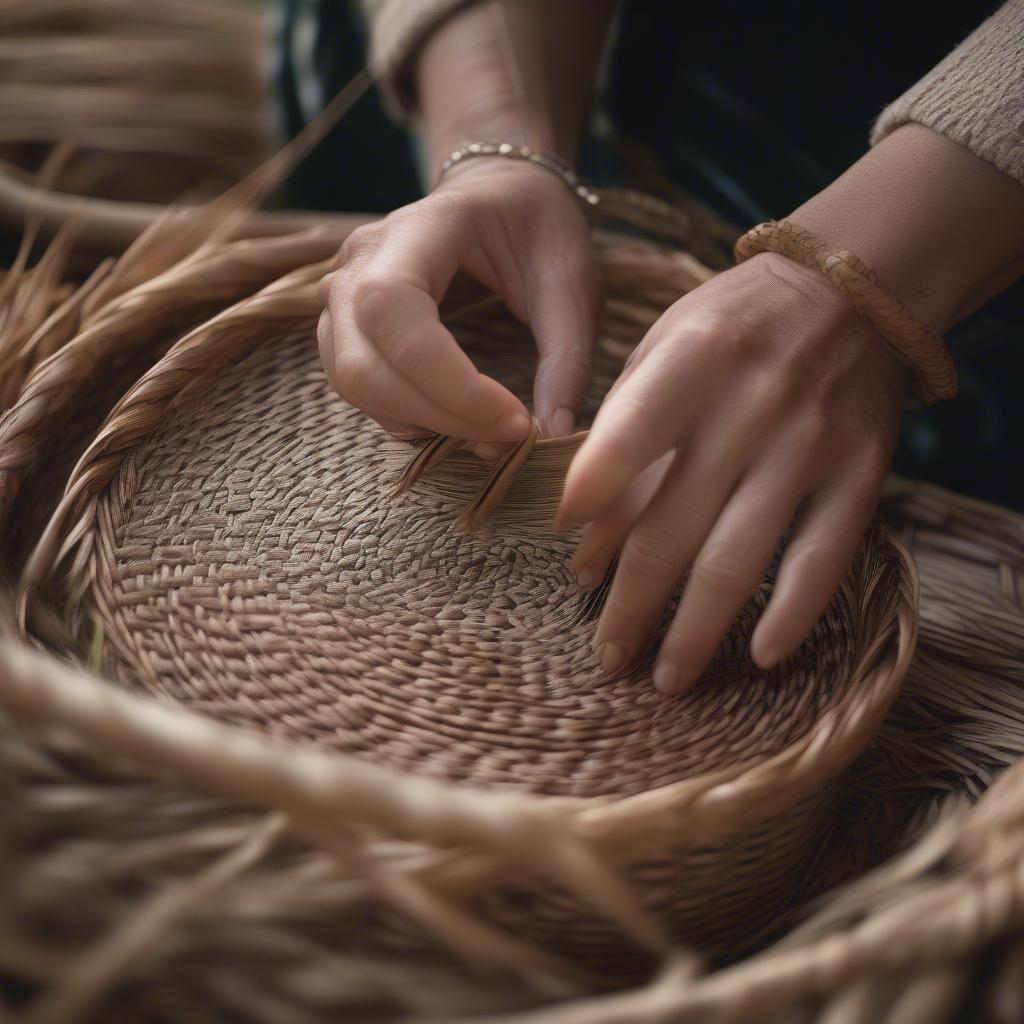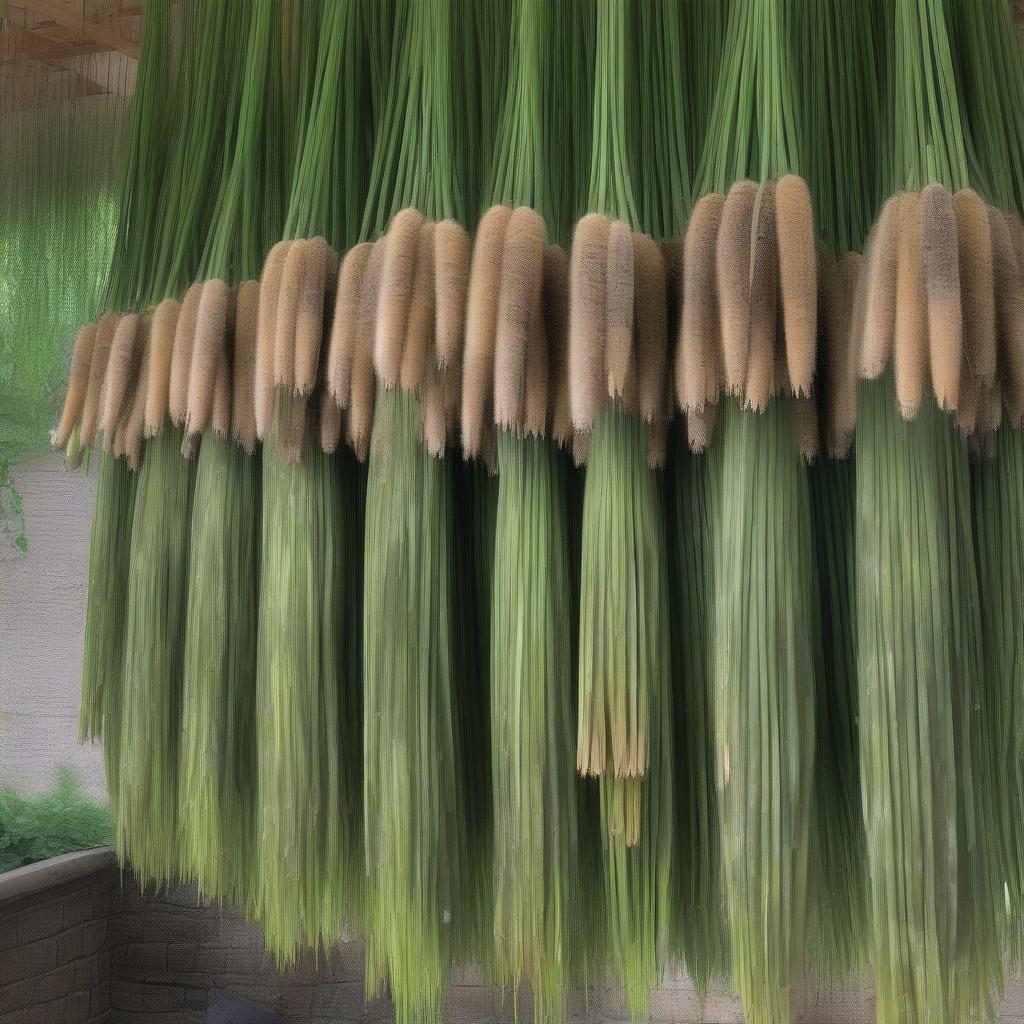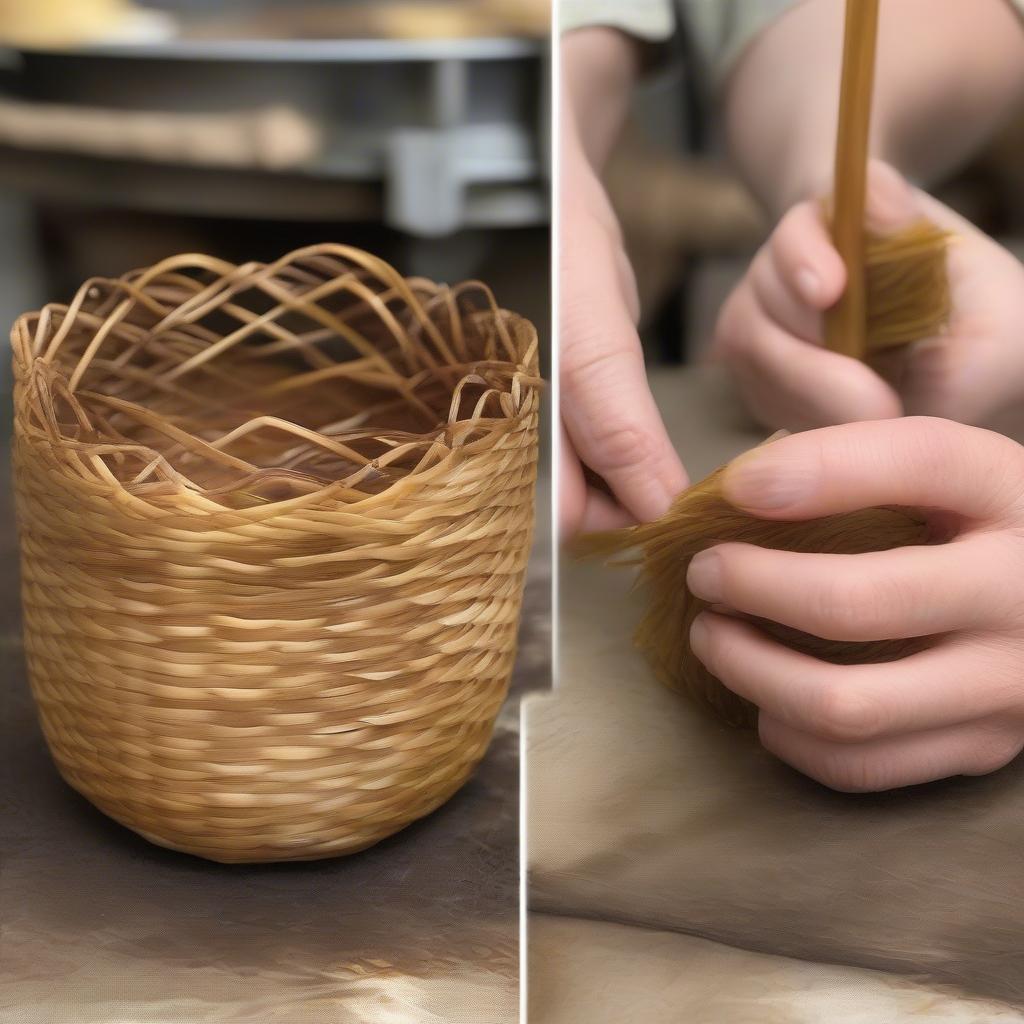Basket Weaving
Weaving Watertight Baskets with Cattail
Weaving Watertight Baskets With Cattail is a traditional craft that combines resourcefulness with artistry. This article explores the techniques and materials required to create these functional and beautiful baskets, from harvesting and preparing cattails to mastering the intricate weaving patterns that ensure watertightness.
 Weaving a watertight cattail basket
Weaving a watertight cattail basket
From ancient times, various cultures have relied on natural resources for their everyday needs. Cattails, readily available in wetlands, have been a popular choice for creating baskets, mats, and even shelters. But creating a basket that can hold water requires a specific set of skills and techniques. The key lies in the tight weaving and the use of specific parts of the cattail plant. Weaving a watertight basket is more than just a craft; it’s a connection to the past and a celebration of nature’s gifts. Want to know how? Let’s dive in!
Harvesting and Preparing Cattail for Basket Weaving
The first step in weaving watertight baskets with cattail is harvesting the right materials. Choose mature cattails with healthy, green leaves. The best time to harvest is typically late summer or early fall. After harvesting, the leaves need to be dried thoroughly. This process can take several weeks, depending on the climate. basket weaving with cattail reeds provides a comprehensive guide on how to work with these versatile reeds. Once dried, the leaves can be sorted according to size and width for different parts of the basket. Soaking the dried leaves in water before weaving makes them pliable and easier to work with, preventing breakage.
 Drying cattail leaves for basketry
Drying cattail leaves for basketry
Techniques for Weaving Watertight Cattail Baskets
Several techniques are employed in watertight basket weaving. The most common is the coiling method, where a core of bundled cattails is spiraled upwards, with each row tightly bound to the previous one using thinner cattail leaves. The tightness of the weave is crucial for preventing leaks. Another important technique is the incorporation of a “false bottom,” a tightly woven layer inside the basket base which acts as an extra barrier against water. This requires careful planning and execution. The twining method can also be used, although it requires greater skill and precision to achieve watertightness.
Achieving a Watertight Seal
Creating a truly watertight basket requires more than just a tight weave. Traditionally, natural resins or pitch were used to seal the gaps between the woven cattails. These substances, often derived from pine trees, acted as a waterproof barrier, ensuring the basket could hold liquids without leaking. Today, alternative sealants like beeswax or even food-safe silicone can be used to achieve the same effect. Experimentation is key to finding the best method for your specific project.
 Applying beeswax to a cattail basket
Applying beeswax to a cattail basket
Historical Uses of Watertight Cattail Baskets
Historically, what tribe could weave baskets that held water reveals the importance of this skill for various Native American tribes. These baskets were essential for carrying water, cooking, and storing food. Their durability and watertight nature made them invaluable tools for daily life. Some tribes even used them for fishing and gathering wild rice, demonstrating the ingenuity and practicality of these woven vessels.
“A well-crafted watertight cattail basket is a testament to the weaver’s skill and understanding of the material,” says renowned basket weaver, Anya Petrova. “It’s a blend of art and functionality that has stood the test of time.”
Modern Applications and Adaptations
While the traditional methods remain valued, modern basket weavers have also explored new materials and techniques. wikihow to underwater basket weave might not be about traditional basketry, but it exemplifies the creativity and humor associated with the craft. The use of synthetic fibers alongside cattail, or incorporating different weaving patterns, allows for greater creativity and design flexibility. These adaptations have led to a resurgence of interest in cattail basketry, blending traditional knowledge with contemporary aesthetics.
“The beauty of cattail basketry lies in its versatility,” adds Maria Sanchez, an expert in ethnobotany. “It’s a craft that allows us to connect with nature while creating something both beautiful and functional.”
In conclusion, weaving watertight baskets with cattail is a rewarding craft that connects us to both our natural environment and our cultural heritage. By understanding the techniques and materials involved, you can create durable and beautiful baskets that serve a practical purpose while showcasing the timeless beauty of this ancient craft. Whether you follow traditional methods or explore modern adaptations, weaving watertight baskets with cattail offers a unique opportunity to express your creativity and appreciate the versatility of this remarkable plant.
FAQ
- How long do cattail baskets last?
- Can I dye cattail leaves for different colors?
- What are the best tools for cattail basket weaving?
- Where can I find cattail for harvesting?
- Are there any safety precautions to consider when harvesting cattail?
- What are some common mistakes to avoid when weaving with cattail?
- Where can I learn more about cattail basket weaving techniques?
For any assistance or questions, please don’t hesitate to contact us at our offices in Hanoi, Vietnam or Tech Avenue, Suite 12, San Francisco, CA 94105, USA. We have a dedicated customer support team available 24/7 to assist you.
